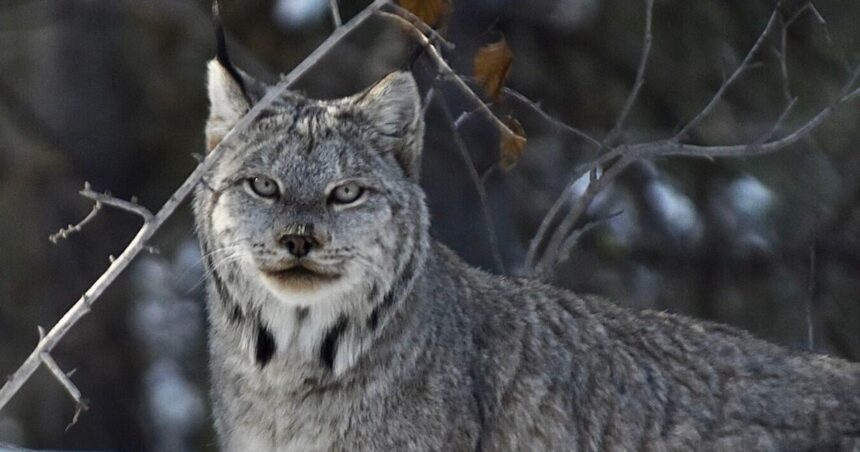Research wildlife biologist John Squires will discuss how Canada lynx responds to natural and human-caused disturbance, in the context of lynx conservation and forest management. The discussion will take place on Thursday, Sept. 5, at noon.
Squires will be speaking at the Draper Natural History Museum Lunchtime Expedition lecture at the Buffalo Bill Center of the West in Cody, Wyoming. His presentation, titled “A Specialist Carnivore at its Southern Range Periphery: Canada Lynx in Disturbed Landscapes,” will be held in the Center’s Coe Auditorium. The talk is free to attend.
If you prefer to attend virtually via Zoom, you can register at https://us02web.zoom.us/webinar/register/WN_3UViCAd6TcC5m3gEmPNusg.
High-elevation, subalpine forests that the Canada lynx (Lynx canadensis) inhabits have been affected by natural and human-caused disturbances. Squires notes that natural disturbances such as forest insect outbreaks and fire, as well as human-caused disturbances like recreation, forest fragmentation, and energy development, are increasing in the Northern and Southern Rocky Mountains.
People are also reading…
For many years, Squires, a research wildlife biologist at the U.S. Department of Agriculture’s Rocky Mountain Research Station in Missoula, has tracked lynx movement with GPS collars to study their landscape use. His research aims to understand how disturbance impacts the ecology and conservation of lynx, wolverines, and prairie-nesting raptors in the Rocky Mountains and Wyoming.
Squires’ research shows that disturbances lead to changes in forest age, type, and arrangement that affect lynx and other species, including human recreationists. By integrating lynx locations, satellite images, and field measurements, his work provides insights for land managers on how to conserve this species in a changing environment.
“Land management agencies face challenges in balancing species conservation with forest products, fire resilience, and outdoor recreation in a time of new disturbances,” said Squires.
“My research aims to develop new insights into wildlife ecology through field research that can be applied to the practical needs of science-based land management and conservation,” he added.





